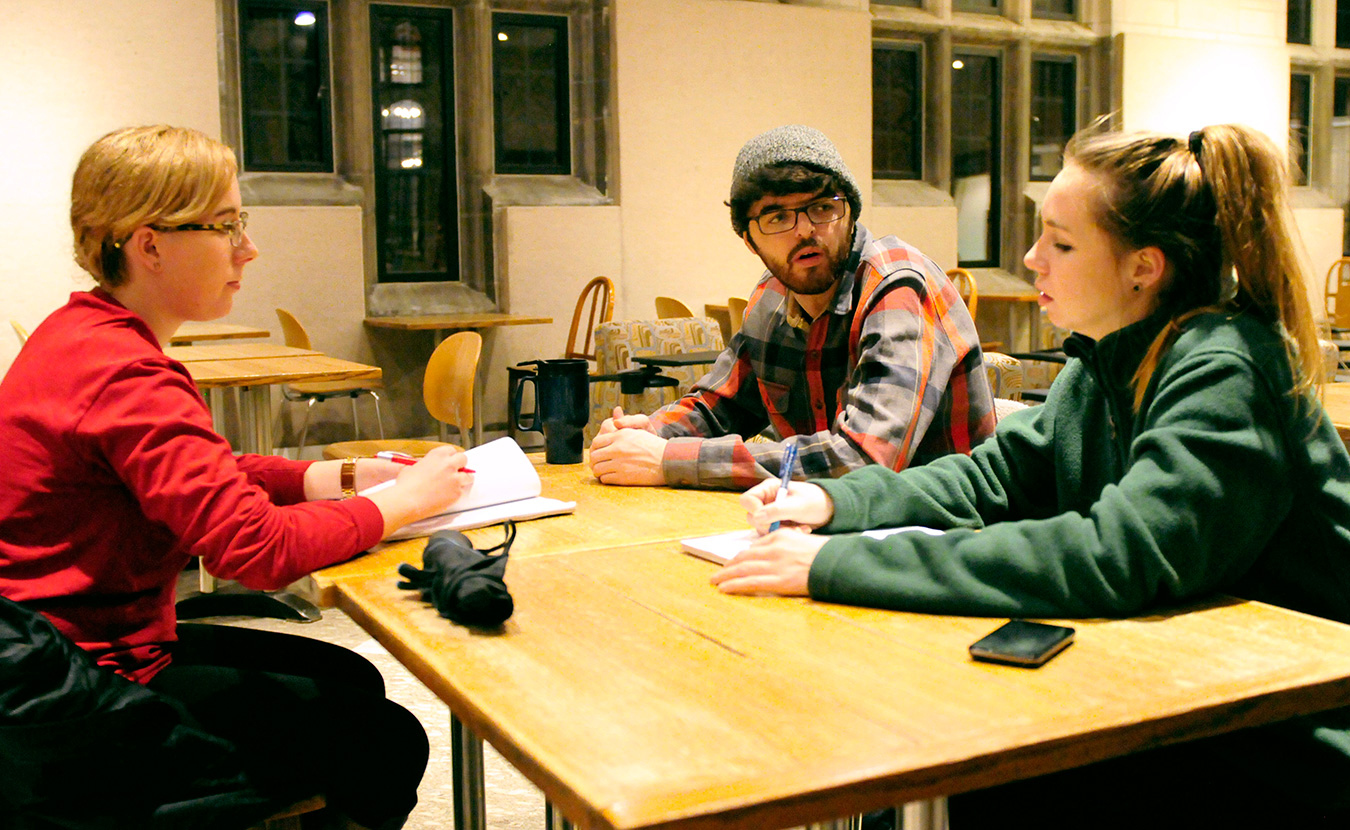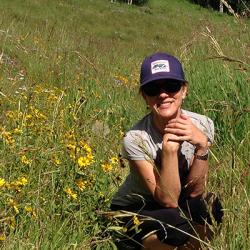It is mid-December, and there has been a steady stream of cold rain all morning in Madison, Indiana. Beyond the destination’s entrance sign stands a row of ornamental trees flanking the narrow road that winds its way to a set of brick buildings with limestone details and terra cotta roof tiles.
On a sunny day in warmer weather, the campus would be a pageant of wide-spanning lawns, mature trees, blooming flowers, and a small fountain surrounded by a butterfly garden. But on this gloomier sort of day, the eye is drawn to the surrounding high fences topped with concertina wire.
The place is the Madison Juvenile Correctional Facility (MJCF), one of Indiana’s maximum-security facilities for youth ages 14 to 18. Maximum-security offenders have been convicted of crimes ranging from repeated status offenses (running away, skipping school, and under-age alcohol consumption) to larceny, assault, and violent or weapons-based offenses.
Pendleton, Camp Summit Boot Camp, and Logansport are detention centers for boys, while MJCF is the state’s only facility for girls.
In Indiana, a key philosophy to juvenile correction is to ensure an offender’s behavior does not become worse. The Indiana Department of Corrections (IDOC) Division of Youth Services’ website says the organization has been charged with providing services in the least-restrictive environment to help foster positive improvements on the lives and future of incarcerated youths and to help reduce the rate of recidivism.

Madison Juvenile Correctional Facility (MJCF) is the only Indiana maximum-security facility for girls ages 14 to 18. | Photo by Ann Georgescu
In 2011, Tim Greathouse took the helm as MJCF’s superintendent and set out to implement IDOC’s balanced and restorative justice model. “When I first got here,” says Greathouse, “some of the staff members thought the approach was too soft, too easy.” But he believes that the punishment and punitive model has little impact. “The biggest determining factor about people getting into the system is education,” he says. “It is the only individual variable. The more education you have, the less likely you are to come back.”
MJCF gives incarcerated girls a safe and motivating learning environment at Promise Jr./Sr. High School located on the facility’s grounds. Promise offers general education courses that provide them with opportunities for academic and vocational success.
MJCF also offers a number of group programs that address the emotional and behavioral needs of its student population, including Criminal and Addictive Thinking, Healthy Relationships, Employability Skills, Substance Abuse, Relapse Prevention, Suicide Prevention, Grief and Loss, and several others.
School-to-prison pipeline
Two years ago, Greathouse and his Promise team — Principal Barbara Siegelin and Transitions Coordinator Jessica Ison (called “Miss Ison” by everyone at the facility) — joined forces with Theresa Ochoa, a professor of special education in the curriculum and instruction department at the Indiana University School of Education. Ochoa approached them with her research on special education in correctional facilities.

MJCF Transitions Coordinator Jessica Ison, who is called “Miss Ison” by everyone at the facility. | Photo by Theresa Ochoa
Ochoa had become alarmed when her research revealed that students with special-education needs were overrepresented in juvenile correctional facilities. “Anywhere from 30 to 70 percent of the entire incarcerated juvenile population has a diagnosed learning disability, and we are not talking about mental health,” she says. Mental health numbers are higher. “These are the kids whose teachers would say have special-education needs.”
She had also found that as suspension and expulsion rates increase in public education, more kids are coming into contact with the law. “All kids get into trouble at that age,” says Ochoa. But she says some special-education kids “lack decision-making skills, self-regulating skills, and an ability to anticipate consequences, so they get into trouble more.”
Hundreds of school districts across the country employ strict disciplinary policies that push kids out of the classroom and into juvenile detention — a phenomenon known as the school-to-prison pipleline. Ochoa believes the pipeline starts, or is best avoided, in the classroom. Zero-tolerance policies, combined with a teacher’s decision to refer a student to punishment, can mean kids are suspended or expelled. These youths sometimes become delinquent, feel worthless, stop trying, and then end up in the juvenile justice system.
“Many public schools do not have the resources to deal with students who are causing trouble,” says Ochoa. “In the mid-80s and early ’90s, schools were expected to deal with problems — but after Columbine [in 1999], schools have enforced zero-tolerance policies and handle the problem kids by suspension or expulsion. With a focus on order, those who can’t comply are out.”
HOPE
For the kids who are caught in the pipeline, Ochoa developed a program called Helping Offenders Prosper in Employment, or HOPE. The program is designed to help juvenile students transition back into the community by focusing on employment. “Jobs are a protective factor,” says Ochoa. “The kids have a greater chance of prosperity when they have a job.”

(l-r) Clements, a mentee, and Swank work on creating the “transitions wall” in Miss Ison’s office. The wall helps Miss Ison track the needs of all students while they are in different stages of programming at MJCF. | Photo by Theresa Ochoa
MJCF is the pilot facility for HOPE, a mentorship-based program that matches an IU undergraduate student with an incarcerated girl. There are currently three mentors and three students that meet each week, one on one, under the supervision of security guards and either Siegelin or Miss Ison. The mentorship relationship begins at intake and lasts throughout the mentee’s incarceration.
Sarah Swank, Haley Clements, and Jesse Cooperman were the project’s first three mentors; two new mentors have just completed training. Since the project is still being developed and funding is minimal, the mentors’ participation is voluntary. They receive no compensation, no mileage reimbursement, no course credits, and no internships.
“I can tell you that the mentors are fantastic,” says Ochoa. “They are eager to make a difference. It’s inspiring. They are highly motivated individuals — intentionally chosen from all disciplinary fields.” Swank is a history major, Clements is studying in the School of Public and Environmental Affairs, and Cooperman is an education major. “I want all future professionals who have an interest in these kids to be aware that they are also human beings,” she adds.
Meetings focus on employment opportunities, filling out job applications, writing resumes and cover letters, and applying to colleges or vocational programs. The mentors also discuss soft skills, which include developing social graces, communication skills, interpersonal skills, language use, and personal habits.
Cooperman’s student will “hopefully be released in a couple of weeks,” Cooperman says. “So right now we are working on her resume and applying for jobs. Also, I have been working on interview skills with her, like making eye contact and shaking hands and stuff like that.”
HOPE at work
Miss Ison tracks each girl’s rehabilitative and behavioral progress from intake to release. Even before the HOPE program began, she met with each of them to discuss getting back into school, obtaining a GED, applying for college, getting a job, and making future plans. She fully supports the mentors and looks forward to the project expanding so that each girl at MJCF has her own mentor. MJCF houses 50 to 55 girls on any given day, with three to five intakes every Monday and up to three releases every Friday.
Miss Ison’s office is located in the Promise school, and as the girls pass by between classes, they stop to wave, smile, or press a nose against the glass. She shakes her head “no” and sweeps a finger toward the classrooms. “They want to see who is here,” she says. “There are new people here today.”
Despite confinement, the girls outside the office do not resemble hardened criminals. They giggle and tease and walk with a swagger. They are moody and emotional — smiles can turn to tears without notice. “They are just like any other teenage girls,” says Miss Ison.
While HOPE’s primary focus is mentorship, the mentors’ efforts also reach the student population as a whole. To provide a visual diagram to track the progress of each girl, the mentors designed a “transitions wall” covering one side of Miss Ison’s office. The wall helps Miss Ison track the needs of all students while they are in different stages of programming. It is an interactive way for each girl to demonstrate her weekly achievements. When Miss Ison grants approval, and as the girls progress through their programming, they write their name on the next level forward.
The mural depicts a playground motif: a tree with three swings hanging from a branch, a squirrel and flower patches on the ground below. At the base of the tree are tulips, which represent each girl’s intake to the center. The tree trunk has a ladder with the rungs representing acknowledgment of their crime and taking ownership of their misdeeds. Hanging from a long branch are three swings. The first swing represents understanding why their actions were illegal; the second swing represents application of the steps of rehabilitation; and the third swing represents demonstration of the concepts of rehabilitation and of becoming a role model for others. A series of buildings follows, representing personal achievements (such as addiction recovery), and below them is a cluster of smiling fabric flowers representing transitioning out of the facility.

The mentors created a “transitions wall” to provide a visual diagram to track the progress of each incarcerated youth, with each part of the mural depicting a different step in their progress. Each youth writes her name as she moves through the steps. | Photo by Ann Georgescu
“For many girls in the facility, it’s the first time they’ve thought about these concepts,” says Swank. “One girl was addicted to drugs her whole life. This is the first positive experience she’s ever had.” The girl shared with Swank that because of the programs and support from her teachers and the HOPE mentors, she discovered she actually likes to learn.
Superintendent Greathouse believes the mentors play a critical role in re-entry. Once the girls are on the outside, IDOC cannot contact them for one year. But the mentors can. The mentorship period extends up to six months after the girls are released. Follow-up meetings are a critical component of HOPE’s work. “I want to make good citizens,” Greathouse says. “The mentors have feet in both worlds.”
Along with the transitions wall, school subjects are geared toward self-reflection and self-awareness. The English class held a poetry slam, which the mentors, Ochoa, and other staff members attended. The girls’ poetry explores personal themes: scars, terrible pain, abandonment, addiction, and a deep-seeded guilt that it was all their fault. “It was very emotional,” says Clements. “They write very personal poems about what has gotten them in there — it was very, very raw. I had to stare at the floor and not look at anyone so I wouldn’t start crying.”
Swank, Clements, and Cooperman have been impressed with the care the girls receive at the facility. “It has to be ahead of other juvenile facilities in the country,” Cooperman says. “They do so much. They care so much. They give so much with the limited resources they have.”
Clements agrees. “It is still prison,” she says, “but it is much more rehabilitative and less correctional than I would have ever expected.”
HOPE is in the process of expanding to all four of Indiana’s long-term correctional facilities and plans to recruit students from IU campuses across the state. Ochoa and a colleague in Costa Rica have collaborated to introduce the program to Costa Rica’s juvenile justice system.
Outside again, the chilly rain pours down. The gardens are soggy and wilted, but Greathouse reminisces about the teachers who planted them and how the girls love the blossoms and the butterflies. As he escorts the IU team back to the parking lot, discussing HOPE and Promise and flower patches, it is easy for one forget the concertina wire.


